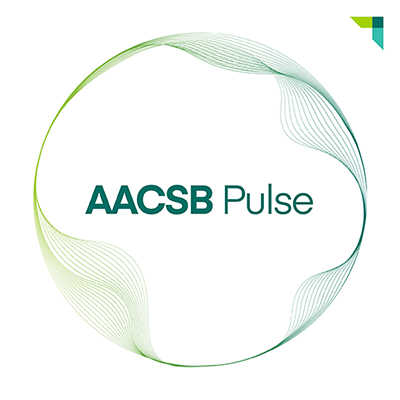A Venture Studio Drives Student Startup Creation
- Flyer Nest, a course at the University of Dayton, gives students the chance to start developing scalable ventures from the very first day of class.
- Based on the State of Ohio’s Technology Validation Startup Fund program, the course immerses students in the process of commercializing technologies to solve pressing problems.
- Students access the technology, funding, and expert networks they need to scale their ventures through the university’s innovation space, in partnership with the Entrepreneurs’ Center, a regional support organization.
American educator and philosopher John Dewey believed the most effective learning occurs through experience. Experiential learning is a particularly valuable component of any entrepreneurship program, because it helps students develop more robust entrepreneurial skills and greater self-efficacy.
At the University of Dayton (UD) in Ohio, the Flyer Nest initiative provides undergraduate students with formative real-world experience. They have opportunities to:
- Create and run businesses through in-class microcompanies as sophomores.
- Evaluate and invest in new ventures through Flyer Angels, the university’s student-run, pre-seed fund.
- Raise nondilutive capital through Flyer Pitch, the university’s new venture competition.
- Engage with more than 190 startups through the university’s community innovation hub, as well as a university neighborhood incubator in an underserved community.
- Lead a 2.5 million USD corporation, Flyer Enterprises, one of the largest student-run businesses in the U.S.
These experiences prepare UD’s undergraduate entrepreneurship students to be successful entrepreneurs. However, we recently realized that a critical gap existed: Students were not provided with the opportunity to launch scalable ventures that they could own upon graduation. This gap, and the input of a prominent donor, inspired UD to establish Flyer Nest, a course designed to create and support a community of student entrepreneurs.
The Venture Studio Concept
Flyer Nest is a venture studio, which is essentially a factory for startups. At a typical accelerator or incubator, an entrepreneur shows up with an idea and gets support to move that idea forward. But a venture studio takes that process one step farther, pulling together resources and helping entrepreneurs apply those resources to launch new ventures in systematic ways. Venture studios support the full range of startup creation, providing space and coaching opportunities, helping entrepreneurs make connections, and outlining processes that help teams go from idea to launch.
A venture studio also brings together aspiring entrepreneurs in a community where they can capitalize on the technology, ideas, and market trends they need to build their businesses.
UD faculty believed they could adopt this concept in an entrepreneurship class, giving undergraduates the opportunity to launch new ventures. The first step, however, was to identify community partners that could bring the necessary resources to the table.
Finding the Right Partners
The UD’s innovation hub, The Hub Powered by PNC Bank, provided the perfect resource for pulling together local organizations that could help launch the venture studio concept. The Hub is the university’s joint initiative with the Entrepreneurs’ Center (EC), a venture development and entrepreneur support organization in Dayton. The Hub is one of the largest university-anchored innovation spaces in the U.S., as well as home to UD’s Crotty Center for Entrepreneurial Leadership.
More than 190 new ventures and small businesses are housed within The Hub, along with most of the organizations that support the region’s startup ecosystem. This combination of resources provided an excellent launch point for a venture studio.
Combining the expertise of UD faculty with the experience of a regional venture development organization provided the resources we needed to launch Flyer Nest.
The EC was a critical partner to help make the studio work. Serving as the entrepreneurial engine within The Hub, the EC bridges the gap between research, entrepreneurship, and industry across the region. EC representatives advise students with guidance about how to find technologies developed by university and military labs that might be available for commercialization.
Their experience in helping to launch and scale new ventures through commercializing technology is essential. But their background and success in helping entrepreneurs find nondilutive capital through federal and state programs is the key ingredient for making Flyer Nest work. By combining the EC team’s experience in supporting new ventures with the UD faculty’s expertise in teaching entrepreneurship, we had the resources we needed to launch Flyer Nest.
The Flyer Nest Model
Once the EC was on board, the UD and EC teams and their partners worked together to build a course structure that combined academic rigor and entrepreneurial opportunity. Their first step was to decide on a framework for the students to use to develop their business case.
Many entrepreneurship courses today rely on a version of the Lean Startup Canvas—a tool based on the Business Model Canvas first developed by Alex Osterwalder. However, the Flyer Nest course uses the State of Ohio’s Technology Validation Startup Fund (TVSF) program. TVSF offers nondilutive grants for Ohio-based startups commercializing technology developed by a university or other nonprofit research lab. Each proposal to the program is a highly condensed business plan coupled with a plan for how the submitting individual or venture will utilize the funding.
Because we structure our course around the TVSF, students who want to pursue their ventures after the course ends will find it easier to prepare their TVSF applications. In fact, they can begin preparing these applications during the semester with the guidance of faculty and experienced entrepreneurs.
After the structure of the course was selected, faculty needed to determine how to help students find technologies available for commercialization. The solution was TechLink, a database of thousands of technologies—developed by the Department of Defense and other nonprofit research labs—that are available for commercialization. TechLink staff recommend promising technologies to students and facilitate connections with inventors and research labs. Students can leverage TechLink to qualify for TVSF funding if they wish to pursue that route, but they can also develop their own technology.
Choosing a Problem, Finding the Tech
As part of Flyer Nest, students are encouraged to focus on problems they would like to solve and use available technologies to solve them, rather than finding a technology and coming up with a problem that seems to align with that tool. Once students land on a problem and an appropriate technology, they begin working through a TVSF application template, provided by our EC partners, covering new sections as the semester progresses.
The class meets twice a week during the semester. The first of these weekly class meetings is spent with a guest from the region’s entrepreneurial ecosystem. UD and the EC bring together a vast network of entrepreneurs, alumni, and other supporters who can guide the students through the startup process. Volunteers and guests include investors, business and patent attorneys, manufacturing and technology experts, economic development professionals, and entrepreneurs who have engaged previously in the TVSF process.
These individuals help students understand how and when to raise capital, how to structure their startups, and even how to engage in the licensing process. Many volunteers and guest speakers are also willing to support teams outside of class, often getting involved as student teams work through their TVSF applications. This additional guidance is especially important to any team that plans to pursue the venture after class.
Although the primary focus of Flyer Nest is to help those who wish to launch scalable ventures, all students achieve valuable learning outcomes as they build viable business cases.
Each week, the teams spend the second class meeting working on their ventures with support from faculty and UD’s entrepreneurs-in-residence (EiRs). Faculty members and the EiRs will check in with each team about their progress and encourage teams that are struggling.
In some cases, students have trouble deciding on a problem to address and a technology that can help them address it. If so, they are reminded that this is a natural part of the ideation and entrepreneurial process, and that selecting something too quickly can create as many challenges as waiting too long.
One key piece of Flyer Nest is making sure that students understand the ideation process. Once they have that understanding, with a concerted effort, they can build their proposal relatively quickly. Another piece is making sure that students appreciate the value of customer discovery. They must recognize that engagement with potential customers and other stakeholders will help them arrive at a viable product-market fit.
Once they build their proposals, student teams present their plans to the program’s stakeholders, including university faculty and staff, staff from local entrepreneurial support organizations, and other entrepreneurs. After students have presented their business cases to experienced professionals, their teams have the chance to continually refine and improve their approaches.
If teams want to continue pursuing their ventures after they complete the course, they can apply what they’ve learned from making these initial presentations. For example, they might pitch their ideas in the university’s new venture creation competition, pitch for funding from the university’s seed fund, or complete the TVSF application process.
Although the primary focus of the class is to help those who wish to launch ventures, all students achieve valuable learning outcomes as they learn to ideate solutions, build viable business cases, and present those cases to professionals. Prior research suggests that students who participate in these types of real-world experiences also develop better teamwork, communication, and self-efficacy skills. Such soft skills will be critical in their future business careers, whether they want to be successful entrepreneurs or work for someone else.
Promising Results
The University of Dayton gives entrepreneurship students the chance to launch microcompanies in their first class and scalable ventures in their last, all while earning credit toward their undergraduate degrees. Although not all students will pursue their ideas after they complete the course, those who do will get support from UD’s entrepreneurship program and EC. This includes access to an extensive network of supporters, as well as to the resources they’ll need to incorporate their businesses, create operating agreements, find patent attorneys, and prepare funding pitches.
Although Flyer Nest is still in its infancy, there is already evidence of successful outcomes. Of the eight teams that have completed the course, one is moving ahead with its idea. Recently, the students launching Saturn Sports, a safety system to ensure sports helmets chin straps are latched properly, were awarded 76,000 USD in cash and support from UD’s Flyer Pitch competition. With the help of EC, they are preparing to apply for 200,000 USD in nondilutive grant funding from the State of Ohio through the TVSF program.
Although these students had jobs lined up for after graduation, they decided to focus on their new venture instead. This is undoubtedly a risk, but one worth taking given the resources they have been provided. The Flyer Nest program gives aspiring student entrepreneurs the support structure they need to pursue their entrepreneurial dreams.






